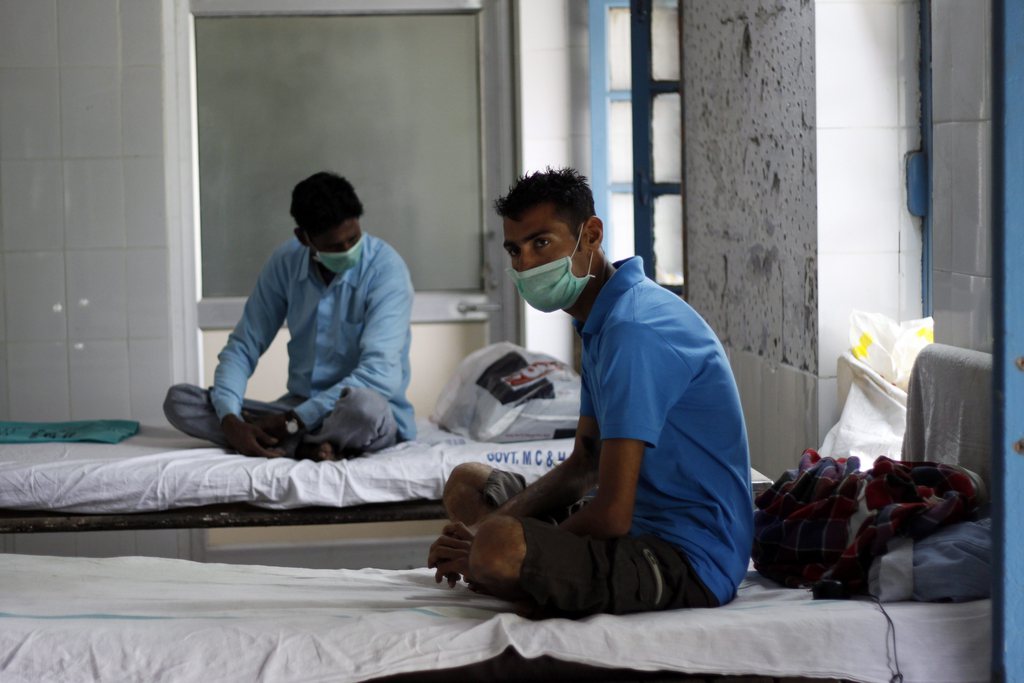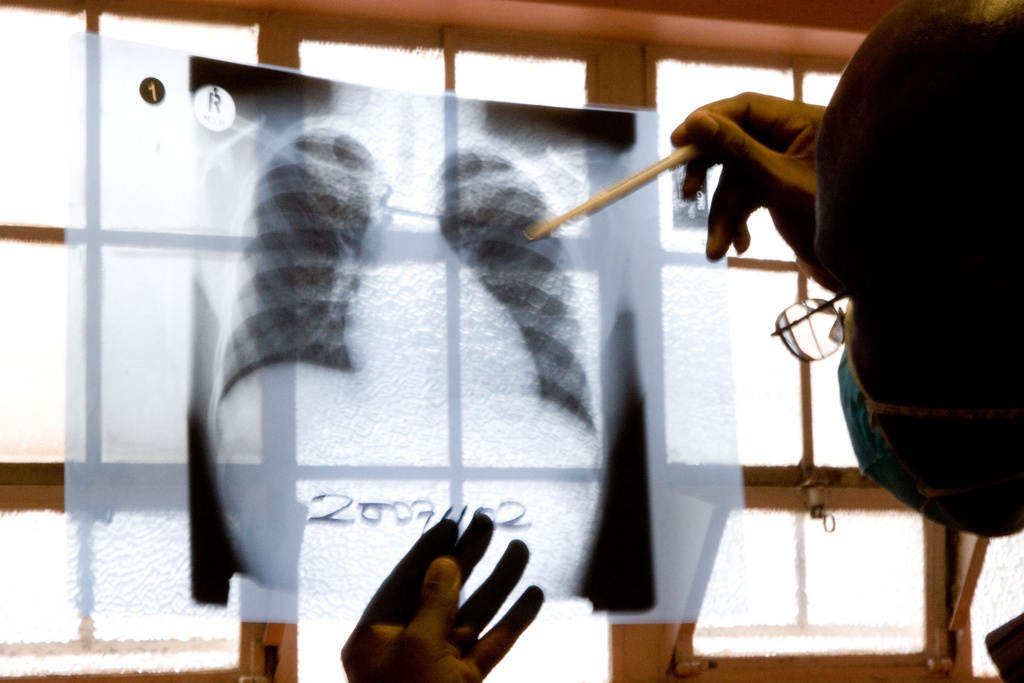TB to be eliminated in Switzerland by 2050

Gone are the days when ailing tourists would flock to Switzerland’s tuberculosis (TB) sanatoriums. The World Health Organization (WHO) has launched an ambitious plan for rich countries, including Switzerland, to sharply reduce tuberculosis infections and serve as a model for harder-hit countries of Africa and Asia, where the disease still thrives.
Although the 33 targeted countries, 21 of them in Europe, have relatively low rates of infection, the disease still kills 10,000 people a year there, predominantly homeless people, migrants, prisoners, drug users, heavy drinkers or people with HIV/AIDS, the Geneva-based WHO said on Thursday.
It is in these communities that industrialised countries could pilot approaches to a disease that is both preventable and curable that could then be transferred to poorer countries, Mario Raviglione, director of the WHO’s Global TB ProgrammeExternal link, told a news briefing.
In Switzerland, around 550 people a year fall ill with TB – around 60 per million inhabitants, according to the Federal Health OfficeExternal link. Hardly anyone dies from it.
The WHO’s goal, together with the European Respiratory SocietyExternal link, is to reduce the infection rate by a factor of ten to fewer than ten new TB cases per million people per year by 2035 in each of the 33 countries, and to effectively eliminate it by 2050 (defined as less than one case per million people per year).
“What we are after, really, is finding what we call trailblazers or model countries that would embark in a resolute way on this campaign against tuberculosis, proving that it is indeed possible to get to elimination level,” Raviglione said.
‘Disaster situation’
The WHO strategy involves broader screening for both active and latent TB infections in high-risk groups, funding high-quality health services and investing in new drugs, vaccines and diagnostic tests.
Common symptoms of TB are coughing with sputum and blood at times, chest pains, weakness, weight loss and fever. But the disease, which is transmitted through the air, can take years to develop, and it is also vital to test as early as possible to determine if a person has a drug-resistant form.
Of the 155,000 annual new cases of tuberculosis in the target countries, about 500 are multi-drug resistant (MDR-TB), caused by an extreme superbug form of the bacterium that does not respond to the most powerful first-line drugs.
But worldwide, China, India and South Africa are among the hardest hit by TB.
The WHO estimates that 8.6 million people developed TB in 2012 and 1.3 million died. Some 450,000 fell ill with dangerous superbug strains in 2012, and up to two million people worldwide may be infected with drug-resistant TB by 2015, it says.
Raviglione singled out Russia for its high rates of MDR, which he called a “disaster situation” that poses a threat to Western Europe.
Standard treatment for TB usually includes a mix of four antibiotic drugs over a period of six months. MDR-TB can take 18-24 months to treat and cost up to $100,000 (CHF90,000) in rich countries.

In compliance with the JTI standards
More: SWI swissinfo.ch certified by the Journalism Trust Initiative











You can find an overview of ongoing debates with our journalists here . Please join us!
If you want to start a conversation about a topic raised in this article or want to report factual errors, email us at english@swissinfo.ch.